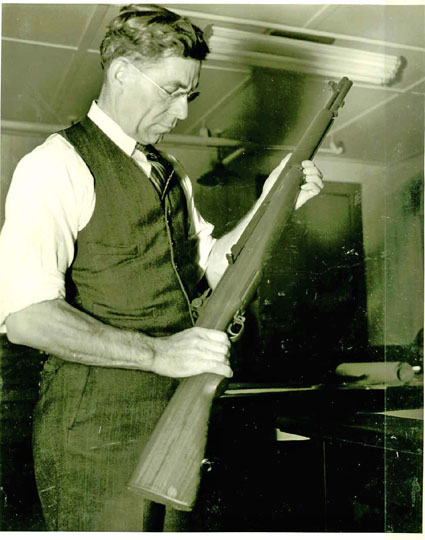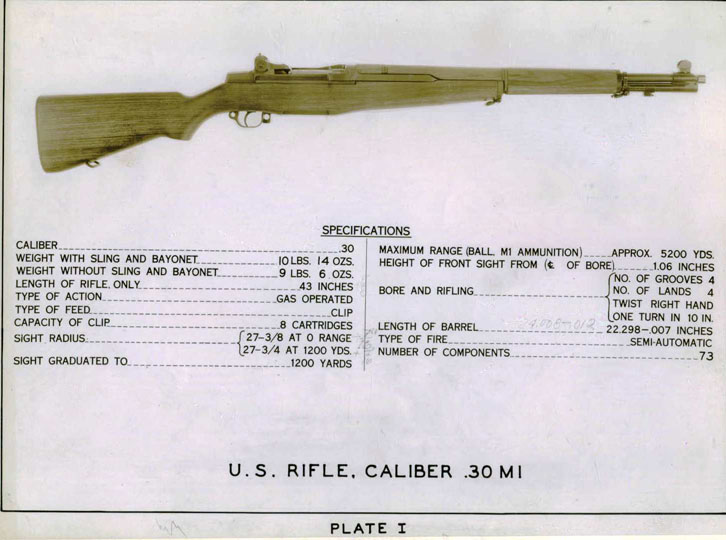|
Constance McLaughlin Greene– History of the Springfield Armory,
Vol. II, Book I, pg. 43:

John Cantius Garand Inspecting the Rifle he designed
Investigation of self-loading magazine rifles dates back to the early years of
the century when a Board of Officers convened at the Armory to test arms of this
type. Additional study was carried on down to the war, but progress was not great
before 1919. The groundwork of the developments of the next era was laid in the
period 1920-1930. The first important chapter begins in 1919 when John C. Garand,
then an employee in the Bureau of Standards, submitted to the Ordnance Department
plans of a light machine gun operated upon a new principle. The Ordnance Department
was not in need of a light machine gun but perceptive officers there thought
Garand’s principle could be applied to a semi-automatic rifle. Therefore
the Department engaged Garand at a salary of $3600 to undertake the design and
construction of a semi-automatic embodying that principle, and in October 1919,
armed with his sketches and partly completed drawings, Garand reported at the
Springfield Armory. Here was to be the scene of his research and constructive
labors for the next twenty-four years.

The M1 Rifle with Specifications
Experiments
with design and construction of semi-automatics at the Armory involved three
different persons, each approaching the problem from a different standpoint,
Captain James L. Hatcher, John C. Garand, and John D. Pedersen. Captain Hatcher,
Officer in Charge of the Experimental Department from May 1919 to January 1922,
by instruction of the Ordnance Department undertook redesign of the Bang gun,
a semi-automatic which had given promise in tests before the war. After tests
in 1922 this project was dropped at the Armory. Mr. J. D. Pedersen, an inventor
and engineer by profession, entered into a contract with the government in 1923
to develop and construct a semi-automatic embodying principles to which he had
already given study.Two renewals of contract, one in 1929 and another in 1930,
perpetuated his activity on this work down to 1931. Of the three men brought in to work on the project, John C. Garand, as a civil
service employee at the Armory, was the only man to be kept on the
assignment steadily from 1919 through the middle thirties when manufacture of
his officially adopted arm began.
The Ordnance
Department’s general requirements for a semi-automatic, as listed in 1923
in the contract with Pedersen, specified that the new arm should weigh as near
eight pounds as possible and not more than 8 ½; that it should be as near
.30 caliber as possible and not less than .276 caliber; that muzzle velocity
should be at least 2450 feet per second; that the trajectory should be only slightly
more curved than for the 1903 rifle up to 500 yards; and that accuracy should
be obtainable at 800 yards and effective energy at 1000 yards. With these problems
before him each man set to work.
|